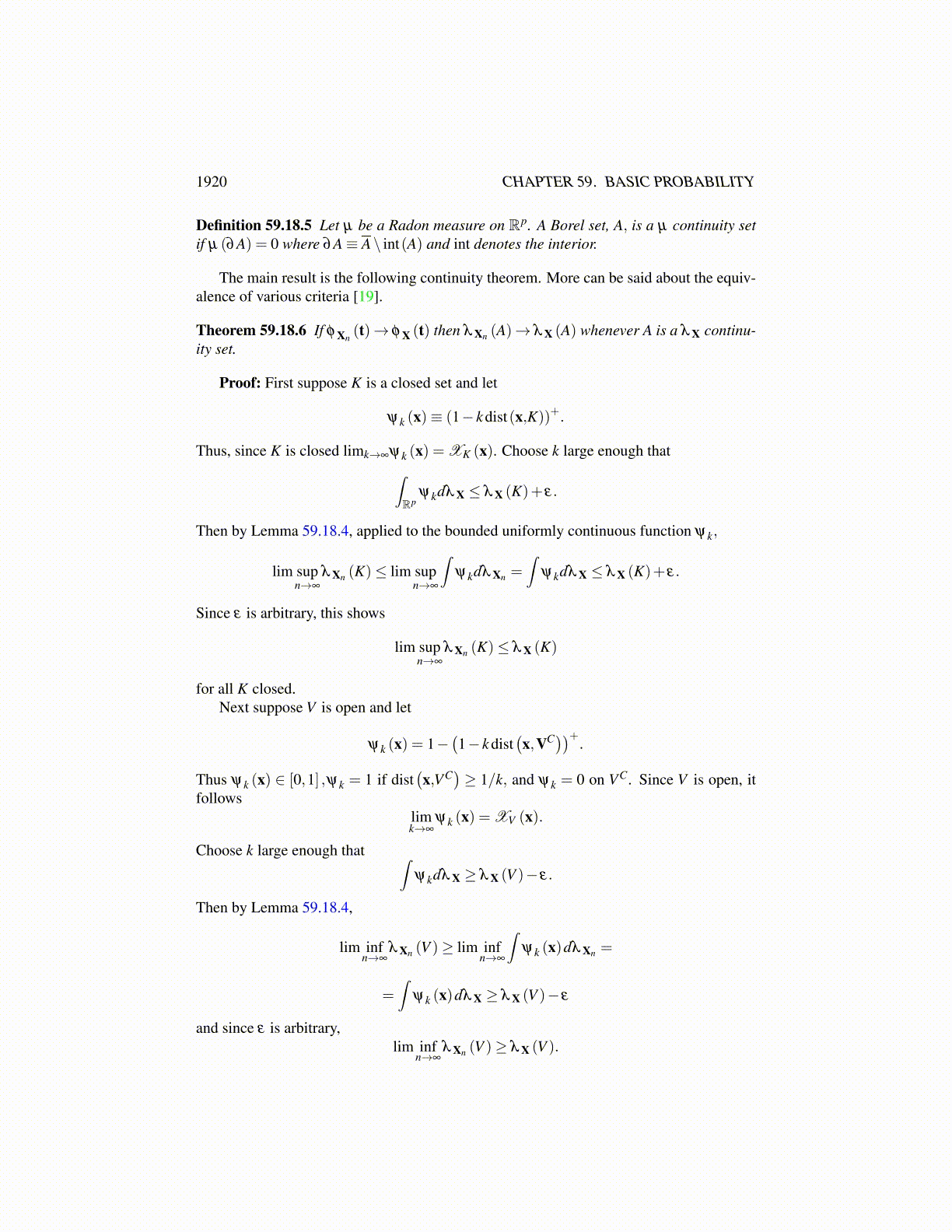
1920 CHAPTER 59. BASIC PROBABILITY
≥ 2∫[|x j|≥ 2
u ]
(1− 1|u|(2/u)
)dλ Xn (x)
=∫[|x j|≥ 2
u ]1dλ Xn (x)
= λ Xn
([x :∣∣x j∣∣≥ 2
u
]).
If ε > 0 is given, there exists r > 0 such that if u≤ r,
1u
∫ u
−u(1−ψ (te j))dt < ε/p
for all j = 1, · · · , p and so, by the dominated convergence theorem, the same is true withφ Xn
in place of ψ provided n is large enough, say n≥ N (u). Thus, if u≤ r, and n≥ N (u),
λ Xn
([x :∣∣x j∣∣≥ 2
u
])< ε/p
for all j ∈ {1, · · · , p}. It follows that for u≤ r and n≥ N (u) ,
λ Xn
([x : ||x||
∞≥ 2
u
])< ε.
because [x : ||x||
∞≥ 2
u
]⊆ ∪p
j=1
[x :∣∣x j∣∣≥ 2
u
]This proves the lemma because there are only finitely many measures, λ Xn for n < N (u)and the compact set can be enlarged finitely many times to obtain a single compact set, Kε
such that for all n,λ Xn ([x /∈ Kε ])< ε. This proves the lemma.
Lemma 59.18.3 If φ Xn(t)→ φ X (t) for all t, then whenever ψ ∈S,
λ Xn (ψ)≡∫Rp
ψ (y)dλ Xn (y)→∫Rp
ψ (y)dλ X (y)≡ λ X (ψ)
as n→ ∞.
Proof: Recall that if X is any random vector, its characteristic function is given by
φ X (y)≡∫Rp
eiy·xdλ X (x) .
Also remember the inverse Fourier transform. Letting ψ ∈S, the Schwartz class,
F−1 (λ X)(ψ) ≡ λ X(F−1
ψ)≡∫Rp
F−1ψdλ X
=1
(2π)p/2
∫Rp
∫Rp
eiy·xψ (x)dxdλ X (y)
=1
(2π)p/2
∫Rp
ψ (x)∫Rp
eiy·xdλ X (y)dx
=1
(2π)p/2
∫Rp
ψ (x)φ X (x)dx